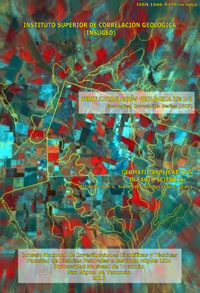Serie Correlación Geológica 33
Search of mineralized sectors of Jaimanita stone deposits by implementing the spectral library of Cuban rocks
Descargar trabajo en formato PDFResumen
BUSQUEDA DE SECTORES MINERALIZADOS DE PIEDRA DE JAIMANITA MEDIANTE LA IMPLEMENTACION DE LA BIBLIOTECA ESPECTRAL DE ROCAS CUBANAS. En la actualidad el yacimiento de piedra de Jaimanita confronta dificultades con los parámetros de calidad de los recursos evaluados. A raíz de esta problemática se dió la tarea de localizar zonas o sectores mineralizados con similares propiedades. Para viabilizar los trabajos pretéritos se utilizó como base la firma espectral de esta roca localizada en la biblioteca espectral de rocas cubanas. Como herramienta de trabajo se empleó el software ENVI y las imágenes satelitales ASTER (Advance Spaceborne Thermal Emission and Reflection Radiometer) de Cuba Occidental. El procesamiento de las imágenes consistió primeramente en llevar el dato ASTER VNIR y SWIR a Reflectancia, para esta operación se empleó el método FLAASH. Posteriormente se realizaron clasificaciones con el método Spectral Angle Mapper (SAM) a fin de obtener respuestas utilizando el espectro PIMA-ASTER de la roca Jaimanita tomado de la librería. Como resultado final de esta técnica se detecta que existen zonas representativas en diversas áreas de la franja Norte Occidental de Cuba, logrando minimizar en tiempo los trabajos de reconocimiento regional.
Abstract
At present time Jaimanita stone deposits facing problems with the high-quality para meters of the evaluated resources. Facing this problem, the objective was to find mineralized zones or sectors with similar properties like previous. To find a way to deal with the previous works it was used the spectral firm of this rock as a basic point, located in the spectral library of Cuban rocks. The ENVI software and the satellite images ASTER used as a working tool (Advance Space borne Thermal Emission and Reflection Radiometer) of Western Cuba. The processing of images firstly consists in carrying the piece of information ASTER VNIR and SWIR to Reflectance using FLAASH methodology. Later, classifications with the method Spectral Angle Mapper (SAM) carried in order to obtain answers using the PIMA ASTER spectrum of the Jaimanita rock taken from the library. Because of this technique the existence of representative zones in various areas of the North Western stripe of Cuba were detected minimizing the amount of time doing the works of regional recognition.






